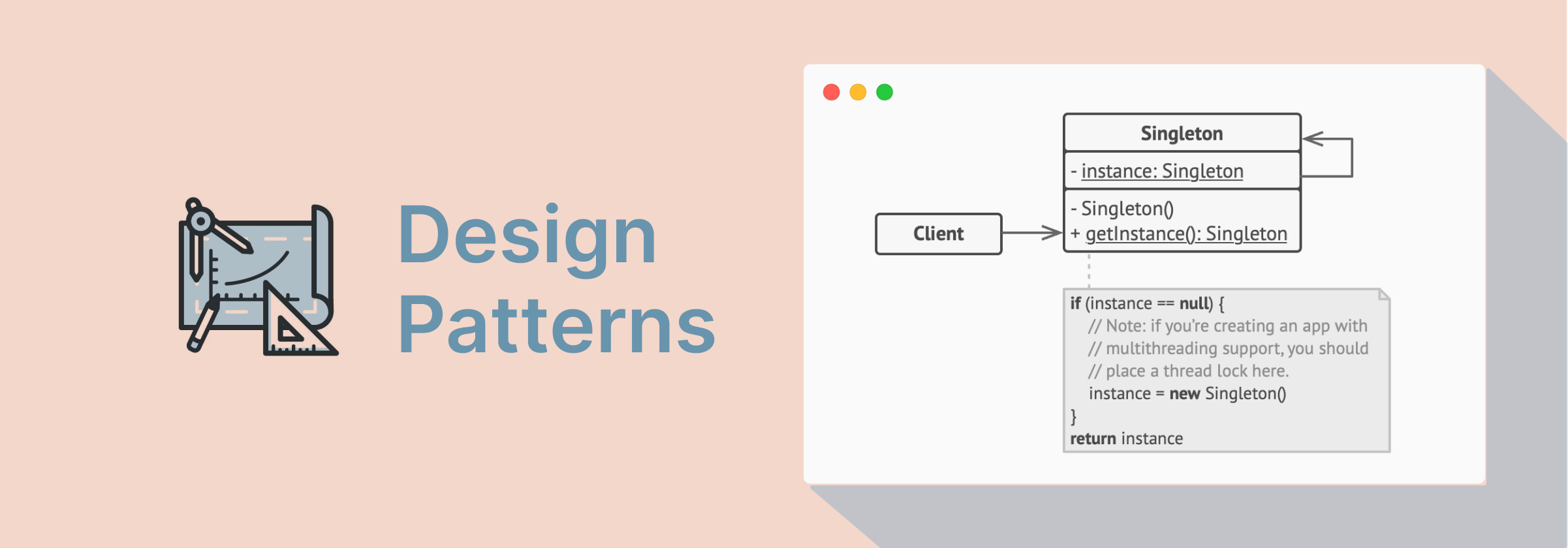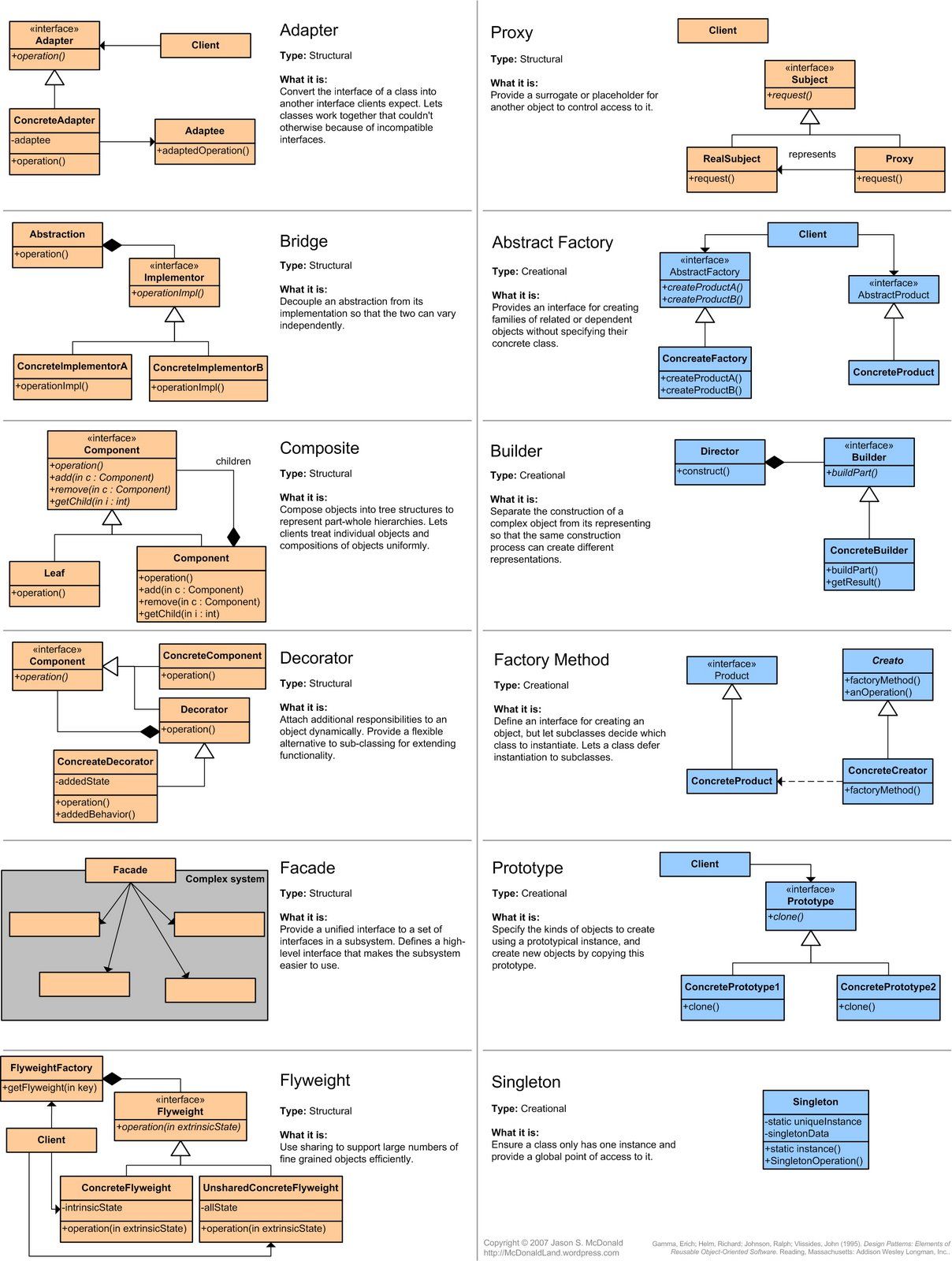Get Started

What's a design pattern?
Design patterns are typical solutions to commonly occurring problems in software design. They are like pre-made blueprints that you can customize to solve a recurring design problem in your code.
You can’t just find a pattern and copy it into your program, the way you can with off-the-shelf functions or libraries. The pattern is not a specific piece of code, but a general concept for solving a particular problem. You can follow the pattern details and implement a solution that suits the realities of your own program.
Patterns are often confused with algorithms, because both concepts describe typical solutions to some known problems. While an algorithm always defines a clear set of actions that can achieve some goal, a pattern is a more high-level description of a solution. The code of the same pattern applied to two different programs may be different.
An analogy to an algorithm is a cooking recipe: both have clear steps to achieve a goal. On the other hand, a pattern is more like a blueprint: you can see what the result and its features are, but the exact order of implementation is up to you.
What does the pattern consist of?
Most patterns are described very formally so people can reproduce them in many contexts. Here are the sections that are usually present in a pattern description:
- Intent of the pattern briefly describes both the problem and the solution.
- Motivation further explains the problem and the solution the pattern makes possible.
- Structure of classes shows each part of the pattern and how they are related.
- Code example in one of the popular programming languages makes it easier to grasp the idea behind the pattern.
Some pattern catalogs list other useful details, such as applicability of the pattern, implementation steps and relations with other patterns.
